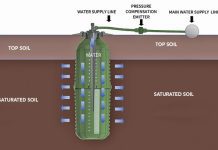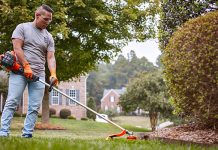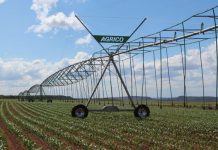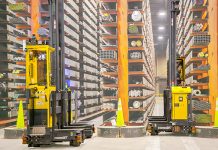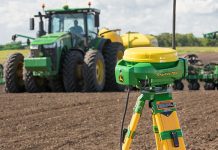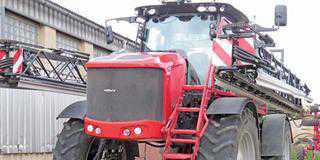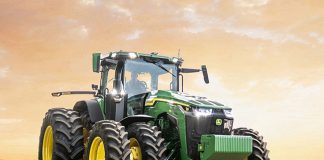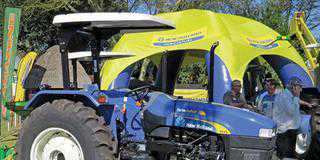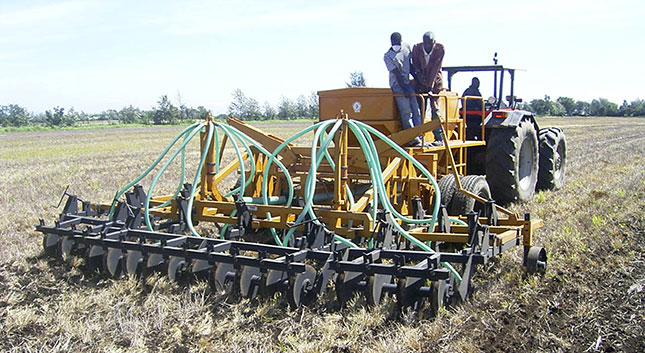
When farmer Rick Brendon of Kenya first put on his thinking cap four decades ago, air seeders in most parts of the world were huge implements employed in large-scale farming operations.
Brendon was convinced that smaller units would be viable for many farmers in Kenya.
He broached the idea to manufacturers of the large units being imported into the country, but failed to generate interest.
READ Solar irrigation kits for small-scale farmers in Kenya
Undaunted, he decided to turn his idea into reality on his own. He formed Ndume Limited and set about building his own planters – realistically priced, easy to calibrate and simple to operate and maintain.
Ndume air seeders consist of a seed and fertiliser box on wheels with a simple three-point linkage system on the back. Because they are trailed units, they can carry a fair load of seed and fertiliser, yet be pulled by a relatively small tractor.
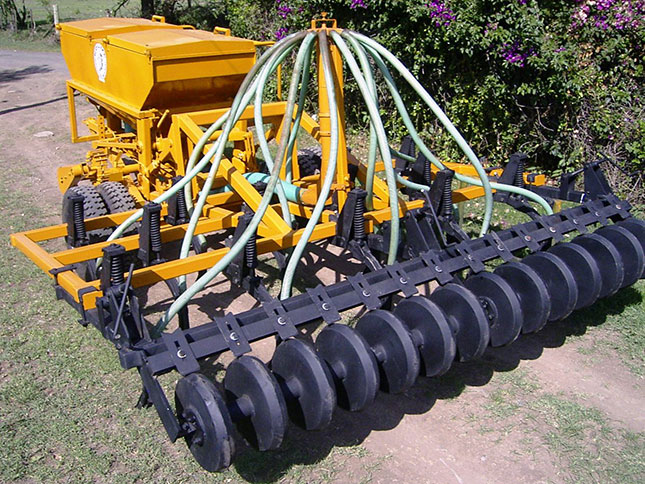
A spiral roller at the back of the cultivator controls the planting depth and covers the seed. The cultivator rides on the roller at the rear and the linkage at the front, as in any tractor-mounted unit.
This means that the cultivator remains parallel to the ground, with all the tines operating at the same depth. It is lifted and lowered into work by a double-acting cylinder controlled by the tractor hydraulics.
When the cultivator is raised, the drive wheel for the metering units automatically lifts off the tyre of the fertiliser/seed cart and the seed flow stops.
Initially, the planter section consisted of a cultivator with four rows of S-type tines spaced at 178mm, with a seeding tube attached to the rear of the tine.
Twenty years later, Roundup arrived on the scene, and ‘conservation’ and ‘minimum tillage’ became buzzwords.
Brendon responded by redesigning the tine of his cultivator, making it considerably heavier and adding a 13mm-wide bar point that penetrates 100mm to 125mm into the ground. Because the point is so narrow, soil disturbance is minimal.
The adjustable seed tube allows for planting depths of 38mm to 50mm.
The conservation tillage tine creates an area of loosened soil beneath the germinating seed, so that the root system – and hence the crop – grows more rapidly.
Row spacing is now 250mm and large press-wheels fitted at the back in place of the rollers ensure firm soil-to-seed contact.
Approximately 25% of the machinery manufactured by Ndume is exported to Tanzania, Uganda, Rwanda, Burundi, Southern Sudan, Ethiopia, Malawi, Zambia and Ghana.
Surely there is a market for a reasonably priced, unsophisticated yet efficient planter manufactured under licence in South Africa?
Joe Spencer is the mechanisation editor of Farmer’s Weekly.

